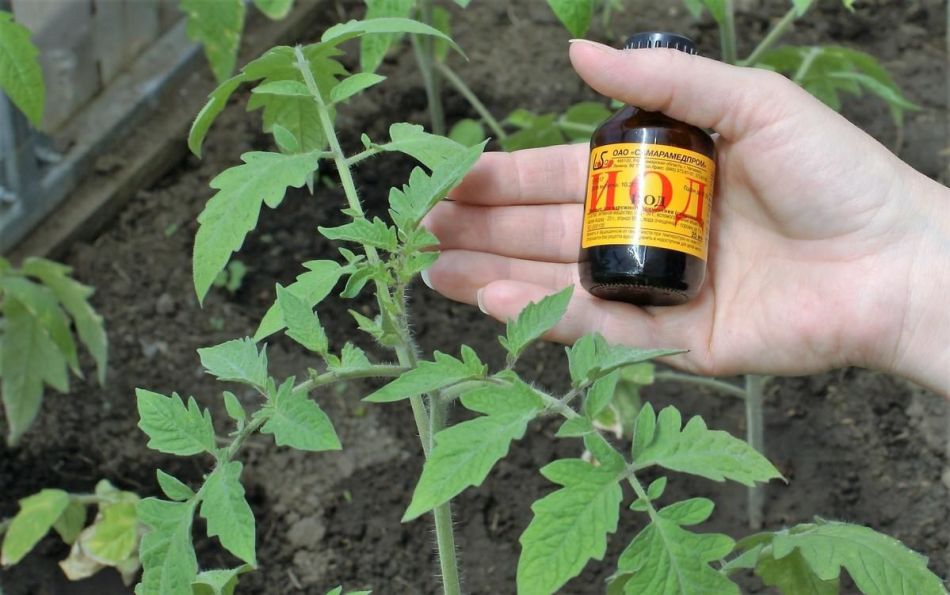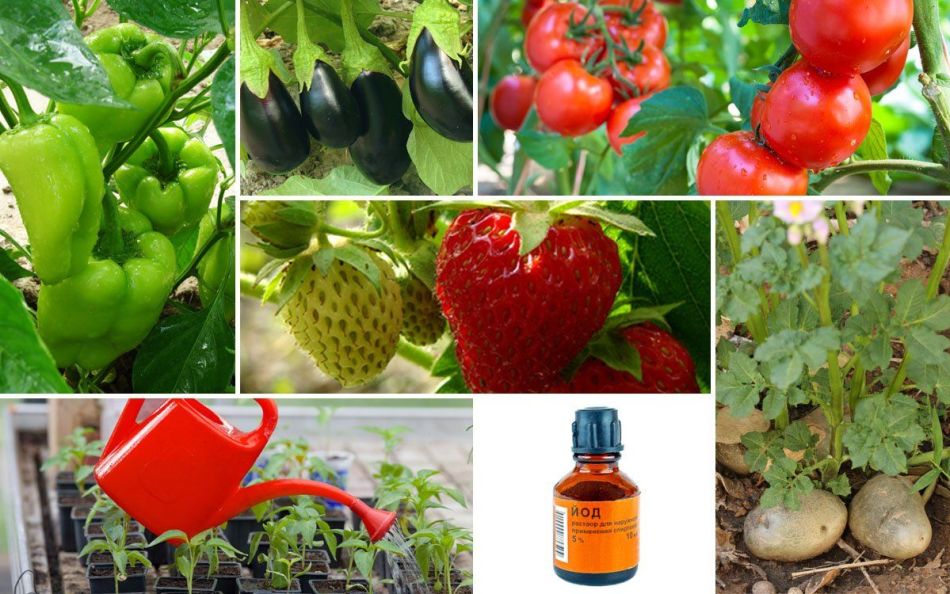Instructions for using iodine in the garden.
Content
With the approach of the summer season and spring work, many summer residents begin to get a heavy arsenal from the nightstands. All available means and substances available in the first -aid kit are ideal for combating pests and preparing plants for the spring season. One of these substances is iodine. It is often used in gardening, because it is distinguished by antibacterial, antifungal properties. In this article we will talk about the use of iodine in gardening.
Application of iodine in gardening
It is worth noting that in the first -aid kit almost every inhabitant of our country has this substance. It is usually used to treat wounds and to disinfect open skin injuries. In addition, iodine can be used in gardening. Sold in the form of 5 and 10 percent solution. The iodine itself dissolves in alcohol, so the solution is alcohol. Usually, iodine uses not in the state that is inside the bottle, but with multiple breeding.
The fact is that the substance is a strong reagent, therefore, with a high concentration, it can lead to damage to the leaves, as well as the stalks of the plant. Thus, iodine can be useful only in the case of high breeding, and a low concentration of the active component in the solution.

The purpose of iodine in gardening:
- The fight against pests
- Root top dressing
- Getting rid of aphids and powdery mildew, mushroom lesions of plants
- Stimulating the growth of fruit crops in order to obtain a good harvest
- Preventive processing, in order to destroy pests
As you can see, iodine is used in a fairly wide range, while not the same solution is used, but there are many recipes for using this tool. This is due to the fact that pests, as well as fungal lesions in plants, are not the same sensitive to iodine solution. Therefore, it is sometimes necessary to introduce additional components, or increase the concentration of iodine.

The benefits of iodine for plants
So why do I need iodine and what is the benefit of it?
Benefit:
- This trace element is involved in the formation of good, dense fruits, and also prevents the occurrence of various ailments of plants. It positively affects productivity, improves the color and taste of fruits.
- In addition, this substance contributes to better digestibility of nitrogen fertilizers. Indeed, very often, due to the lack of some trace elements, plants cannot adequately respond to ammonium nitrate, so very often there is no result after use.
- This is due to iodine deficiency and some trace elements. Please note that in no case can I increase the concentration of iodine in the solution, because this will lead to a deterioration in culture growth, as well as yellowing of the leaves.
- Iodine can be used to improve plant resistance to some types of diseases, a rather weak solution is prepared for this.

Iodine for seedlings of tomatoes and cucumbers, cabbage
Recipe:
- It is necessary to add approximately 1 ml of iodine to a ten -liter bucket of water and pour the solution directly under the root. Such top dressing is carried out even before the ovaries for the fruits appeared. Processing is carried out once every 14 days.
- Try not to do this more often so as not to spoil the plants. If you saw that a sufficient number of ovaries have formed on which the fruits will appear, you can repeat the top dressing, but at the same time change the solution somewhat.
- Now, in addition to 1 ml of iodine, it is necessary to enter 150 ml of hydrogen peroxide with a concentration of 3%, and 1000 ml of cow's milk, in addition to 1 ml of iodine. The solution is used no more than once every 5 days.
- This kind of processing helps to combat harmful microorganisms, spores of mushrooms and viruses. Tomati with iodine feeding is very well. This solution helps to raise transplanted seedlings, and accelerate its survival in the soil.
- After you transfer tomatoes to the ground, pour them with iodine solution. To do this, only one drop of alcohol solution is introduced per 1 liter of water. Please note that watering is carried out under the root, it is not necessary to allow the leaves. Helps improve the crop, and also accelerates the ripening of tomatoes.
- In addition, iodine is often used to feed cabbage. It is necessary to enter about 2 ml of iodine alcohol solution into a ten -liter bucket. Now it is necessary to select 1 liter of the solution from this bucket and pour in under the root. Try not to get on the leaves.
- Very often on the leaves of cabbage occurs powdery mildew. To combat it, it is necessary to use a solution for spraying from iodine. It is necessary to add 5 drops of substance on a ten -liter bucket and spray the plants.

Iodine from powdery mildness and pests
Iodine helps to cope with powdery mildew. Most often used on cucumbers.
Recipe:
- To prepare the solution, add only one drop of iodine per 1 liter of skim milk. A similar solution is typed in a spray and sprayed leaves affected by the disease. Processing is carried out once a week.
- Very often iodine is also used in order to prevent infection with pests. The fact is that garden crops often overcome the weevils and larvae of the May beetle.
- In order to deal with these pests, as well as to prevent infection of plants, it is necessary to introduce an iodine bottle on 10 liters of water with a volume of 20 ml. Now 1 liter is selected from the resulting solution, and introduced under each bush.

Iodine for strawberries, currants and fruit trees
Such watering is used when caring for strawberries and some garden crops, you can use currant bushes for watering.
Tips:
- Processing is carried out 2 times a year, that is, in spring and autumn. Please note that it is best to water the second time in the fall in September or at the end of August. If you noticed that the plant worsens and does not take root well in a new place, it is necessary to prepare a healing solution.
- To do this, it is necessary to introduce 20 ml of alcohol solution on a ten -liter bucket of water and water for a week. In total, 3 processing must be performed in a week. Enter at least 1 liter of solution for each bush.
- Iodine is used not only for bushes of strawberries, tomatoes and cucumbers, it can be safely used to combat pests of fruit trees and bushes. He effectively fights rot. To do this, dissolve 10 ml of iodine in a bucket of water. Now it is necessary to spray the trees, and you need to do this about 30 days before harvesting. Spraying is carried out twice. After the first time, you need to wait another three days and repeat the processing.
- If the leaves of cucumbers turn yellow, it is also necessary to deal with this with a solution of iodine. It is necessary to wait for approximately 3-4 leaves on the ovary and processing the following solution.
- About 1 ml of iodine, 20 g of laundry soap, and 1000 ml of milk need a ten -liter bucket. Now it is necessary to grate the laundry soap and boil in a small amount of water to make the gruel. Enter water and add milk there. Cucumbers processing are carried out every 10 days.

As you can see, iodine is a cheap product that is available in the first -aid kit for almost every person. It can be safely used when caring for garden plants. This will make them stronger and protect them from pests.







